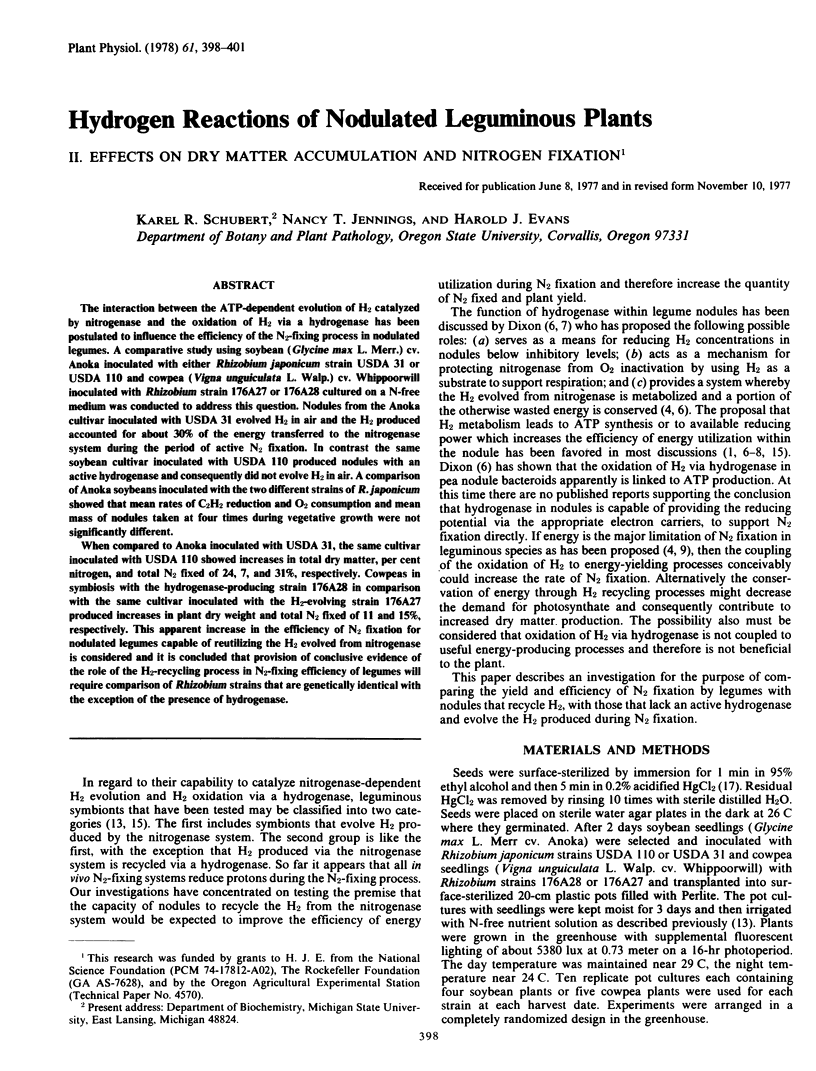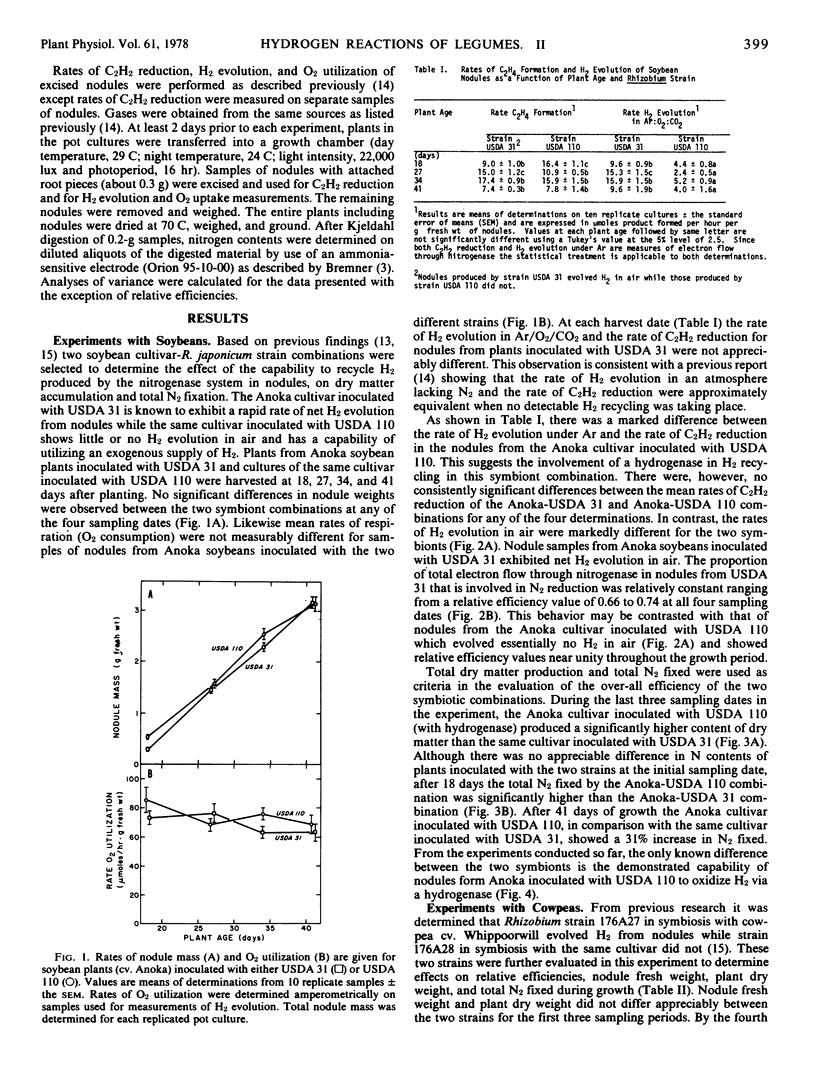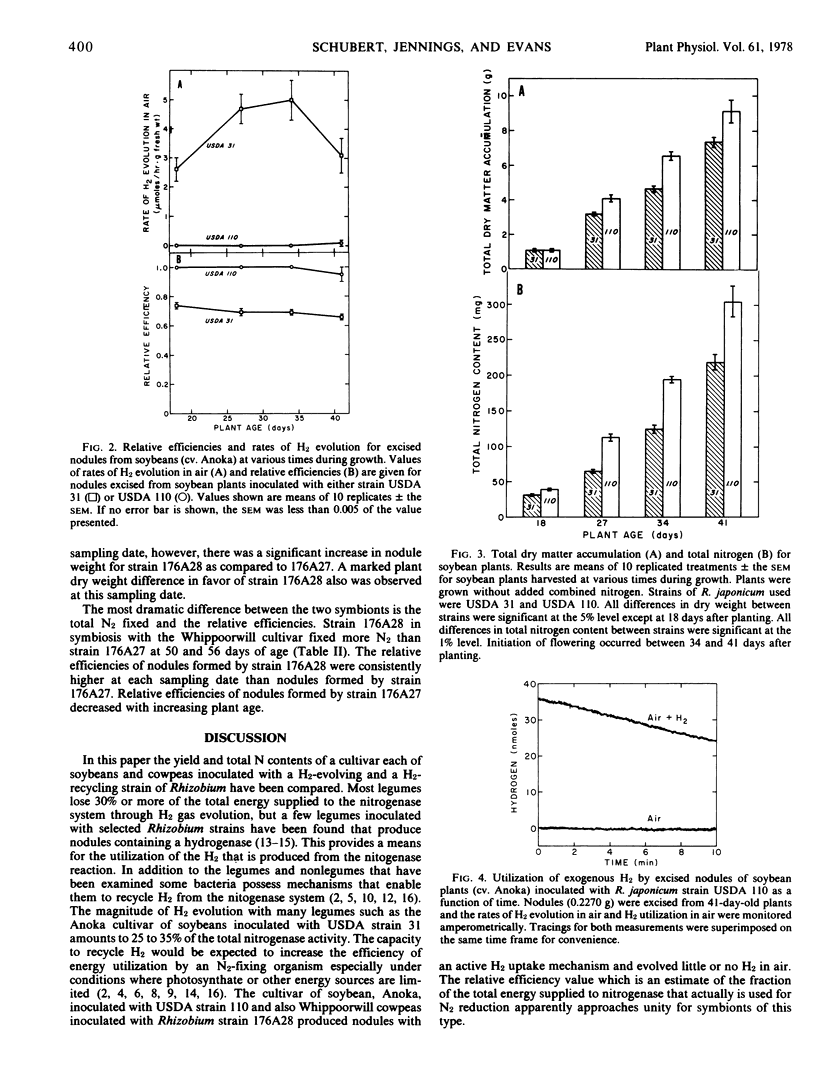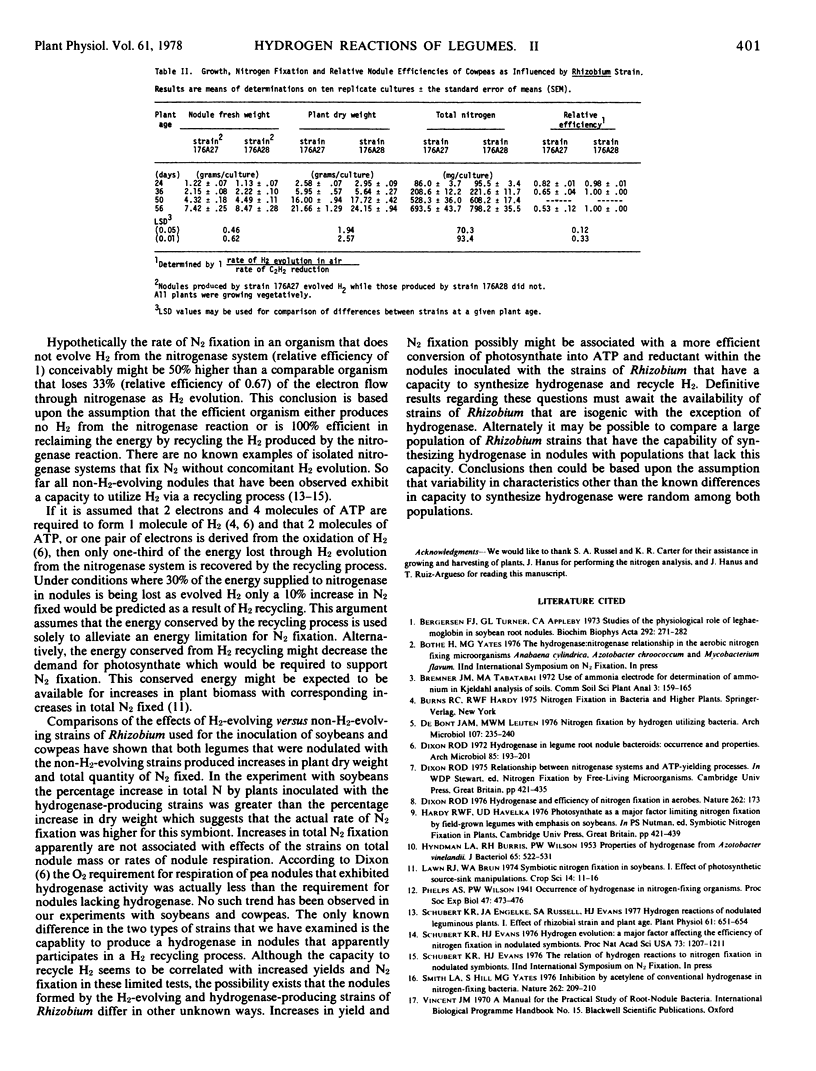Abstract
The interaction between the ATP-dependent evolution of H2 catalyzed by nitrogenase and the oxidation of H2 via a hydrogenase has been postulated to influence the efficiency of the N2-fixing process in nodulated legumes. A comparative study using soybean (Glycine max L. Merr.) cv. Anoka inoculated with either Rhizobium japonicum strain USDA 31 or USDA 110 and cowpea (Vigna unguiculata L. Walp.) cv. Whippoorwill inoculated with Rhizobium strain 176A27 or 176A28 cultured on a N-free medium was conducted to address this question. Nodules from the Anoka cultivar inoculated with USDA 31 evolved H2 in air and the H2 produced accounted for about 30% of the energy transferred to the nitrogenase system during the period of active N2 fixation. In contrast the same soybean cultivar inoculated with USDA 110 produced nodules with an active hydrogenase and consequently did not evolve H2 in air. A comparison of Anoka soybeans inoculated with the two different strains of R. japonicum showed that mean rates of C2H2 reduction and O2 consumption and mean mass of nodules taken at four times during vegetative growth were not significantly different.
When compared to Anoka inoculated with USDA 31, the same cultivar inoculated with USDA 110 showed increases in total dry matter, per cent nitrogen, and total N2 fixed of 24, 7, and 31%, respectively. Cowpeas in symbiosis with the hydrogenase-producing strain 176A28 in comparison with the same cultivar inoculated with the H2-evolving strain 176A27 produced increases in plant dry weight and total N2 fixed of 11 and 15%, respectively. This apparent increase in the efficiency of N2 fixation for nodulated legumes capable of reutilizing the H2 evolved from nitrogenase is considered and it is concluded that provision of conclusive evidence of the role of the H2-recycling process in N2-fixing efficiency of legumes will require comparison of Rhizobium strains that are genetically identical with the exception of the presence of hydrogenase.
Full text
PDF



Selected References
These references are in PubMed. This may not be the complete list of references from this article.
- Bergersen F. J., Turner G. L., Appleby C. A. Studies of the physiological role of leghaemoglobin in soybean root nodules. Biochim Biophys Acta. 1973 Jan 18;292(1):271–282. doi: 10.1016/0005-2728(73)90271-5. [DOI] [PubMed] [Google Scholar]
- De Bont J. A., Leijten M. W. Nitrogen fixation by hydrogen-utilizing bacteria. Arch Microbiol. 1976 Apr 1;107(3):235–240. doi: 10.1007/BF00425333. [DOI] [PubMed] [Google Scholar]
- Dixon R. O. Hydrogenase in legume root nodule bacteroids: occurrence and properties. Arch Mikrobiol. 1972;85(3):193–201. doi: 10.1007/BF00408844. [DOI] [PubMed] [Google Scholar]
- HYNDMAN L. A., BURRIS R. H., WILSON P. W. Properties of hydrogenase from Azotobacter vinelandii. J Bacteriol. 1953 May;65(5):522–531. doi: 10.1128/jb.65.5.522-531.1953. [DOI] [PMC free article] [PubMed] [Google Scholar]
- Schubert K. R., Engelke J. A., Russell S. A., Evans H. J. Hydrogen reactions of nodulated leguminous plants: I. Effect of rhizobial strain and plant age. Plant Physiol. 1977 Nov;60(5):651–654. doi: 10.1104/pp.60.5.651. [DOI] [PMC free article] [PubMed] [Google Scholar]
- Schubert K. R., Evans H. J. Hydrogen evolution: A major factor affecting the efficiency of nitrogen fixation in nodulated symbionts. Proc Natl Acad Sci U S A. 1976 Apr;73(4):1207–1211. doi: 10.1073/pnas.73.4.1207. [DOI] [PMC free article] [PubMed] [Google Scholar]
- Smith L. A., Hill S., Yates M. G. Inhibition by acetylene of conventional hydrogenase in nitrogen-fixing bacteria. Nature. 1976 Jul 15;262(5565):209–210. doi: 10.1038/262209a0. [DOI] [PubMed] [Google Scholar]


